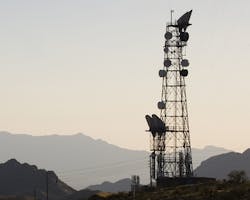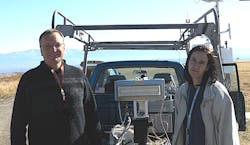Smaller, More Versatile Antenna Could Change the Communications Game
As wireless communications technology continues to advance, the need for smaller, more versatile and energy- and cost-efficient antennas is becoming increasingly important. To meet that need, scientists and engineers at Los Alamos National Laboratory have developed a new type of antenna, LightSlingers.
LightSlingers use volume-distributed polarization currents stimulated within a dielectric to faster-than-light speeds to emit electromagnetic radiation. In contrast, traditional antennas use the surface currents of massive moving particles on metallic elements such as dipoles.
Thanks to the radiation source’s motion, LightSlingers can precisely “sling” tightly focused wave packets aimed in specific directions. This gives them potential advantages over phased arrays in secure communications such as 4G and 5G local networks as well as defense communications and radars.
LightSlinger antennas are small size, lightweight, and efficient. They also withstand more abuse than conventional antennas and can be built in unusual shapes such as flat panels, cylinders and disks designed for specific situations and applications. For example, LightSlinger antennas could be designed as integral parts of ceramic armor built for tanks or unmanned ground vehicles.
Researchers built and tested several LightSlinger prototypes in the lab and in the field over distances up to almost 50 miles. Three of them were independently validated by a U.S. telecommunications company. Los Alamos is now looking to design and build commercial prototypes that can be field tested and mass-produced using 3D printing and robotic processing.
“We have been developing LightSlingers at Los Alamos for more than 15 years,” says John Singleton, a physicist and one of the project’s principal investigators. “They were initially developed to study violent astronomical phenomena, but we soon realized they were more efficient and considerably more flexible than similarly-sized conventional antennas.” “Our hope is that LightSlingers will soon replace outdated base-station antennas and expedite the rollout of 5G,” says Andrea Schmidt, a Los Alamos researcher.

